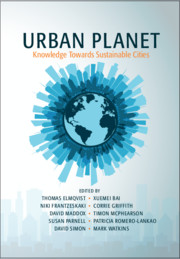In the past few years, there has been a proliferation of city-network initiatives, most of which are donor-led. For donors and governments alike, there is a strong investment case for developing and participating in such networks. These networks have shown that cities are willing and able to learn from each other, and frequently take up innovations and good practice when it is pragmatic and makes sense for their contexts. City governments have resources of their own that can be used to implement solutions once they have been identified and tested. And when networked together, city leaders have amplified voices and greater influence on the global agendas that matter to them. In short, the potential impact of such networks can be tantalizingly outsized – leveraging large investment flows, shifting global agendas, and ideally improving the lives of millions through better urban governance.
The challenge is not that these programs exist or that they have multiplied in recent years. Nor is it necessarily a problem that these initiatives are largely donor-led. Most of these programs have very important goals that they aim to achieve, which would otherwise not get the attention they deserve if not for the external seed funding. The challenge is that most of these initiatives are structured and implemented in a generic, cookie-cutter manner that ignores the complexity of city governance systems, physical environments, and social dynamics. This simplified, reductive approach can unfortunately lead to wasted resources and unintended negative consequences.
Programs that seek to network a large number of cities, especially a highly diverse set of cities, often start their work with cities with a highly structured process. There are templates and worksheets to fill out, assessment tools to be completed, engagement meetings and working groups formed, 10-point plans drafted, and public commitment ceremonies and press events to be held. These can be applied rigidly and blindly at times. And although “templatizing” a process can help reduce the transaction costs of working across multiple cities and can facilitate comparison, it inadvertently gives an oversimplified and singular picture of what it means to be, and how to become, a more sustainable/resilient/healthy city. It leaves the impression that the solutions that developed in and for London and New York are the only valid way forward. The standardized approach also reduces the opportunity of learning from a diversity of approaches (some of which may be quite replicable) that cities might develop if they were allowed more flexibility.
These rigid processes are often supported by external consultants, who fly in with global solutions but often have only a partial understanding of the challenges a city is facing, or the context in which they are operating. As a result, local-level engagement and goodwill are quickly lost, local capacity and creativity are crowded out, and solutions are misapplied and later abandoned once the funding ends.
The usual, cookie-cutter approach taken often masks the complexity of cities, and overlooks the forces that are really driving urban development patterns. Factors such as real estate and property development interests, or party politics, for example, are rarely examined. Worse, these programs, which are often a source of pride and media attention, can also be manipulated to draw attention away from issues that aren’t getting worked on – inequity, social marginalization, and police violence, to name a few.
A better approach is perhaps to start with a localized understanding of the sustainability/resilience/health challenges facing a city by engaging citizens as well as the city leadership in defining the precise objectives of the initiative and the process to be followed. Providing some leeway in terms of defining objectives and process will help to contextualize the initiative’s objectives within the priorities of the city, and may improve the relevance of the initiative to the reality of daily life of citizens.
Second, investing in high-quality facilitation is critical. Facilitators must be able to guide city leaders and stakeholders through a process, bringing soft skills as well as technical skills, blending global and local knowledge; yet, facilitators must not do it for the local constituents. It’s important that the facilitation process be genuine and not a “facipulation” that seems participatory, but only superficially engages or even manipulates different stakeholders. The facilitation process needs to be open to a certain amount of messiness, including conflict; an open discussion of different interests, objectives, and values; and some inevitable meandering of the process.
Third, there needs to be room to experiment and innovate within the process. This can take various forms, from testing out ideas in pilot projects to developing new forms and processes for citizen engagement. Creating space for a culture of local innovation is critical to unlocking latent and, with luck, enduring capacity to innovate and change.
Working in this way will take longer and may stray at times from the funder’s or the network’s core objectives and plans. However, the deeper engagement, more flexible process, and an upfront investment in identifying and/or developing a cadre of skilled facilitators and local innovation capacity may well be worth it and lead to more durable and profound changes in urban systems. Ultimately, only evaluative evidence will tell us what approaches work best under which conditions, as well as what’s most cost effective, efficient, and durable. However, in the meantime, it seems worthwhile to experiment with these different ways of working so that we can better understand how to catalyze the widespread changes in urban life and sustainability that are critical to improving the lives of billions and equally critical to maintaining and improving the health of our planet. Embracing the complexity of cities, rather than trying to simplify cities to make them fit into a standard template, will ultimately help city networks meet their objectives and create enduring change in cities.



